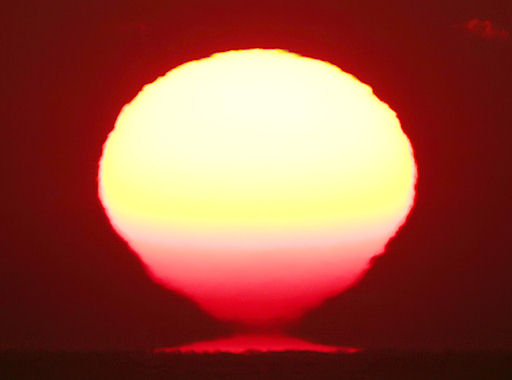Turn your cell phone into a field-tested satellite tracker. Works for Android and iPhone. | | |
SOLAR SAIL SIGHTINGS: It has been confirmed: NASA's NanoSail-D spacecraft successfully unfurled its solar sail on Jan. 20th. Ground-based satellite tracking assets (a.k.a. military radars) detected a significant increase in area at the nominal time of deployment. Veteran satellite watchers have failed, however, to spot the sail visually during predicted passes. That could be because the sail's orbit is not yet precisely known. The situation will likely improve in the nights ahead. You can join the search using Spaceweather.com's satellite tracking app as a guide.
SUNSPOT ACTIVITY: New sunspot 1149, circled below, is crackling with C-class solar flares. This spot didn't exist barely a day ago, but now it is a growing sprawl more than 100,000 km across. Click on the image to view an 8MB movie from NASA's Solar Dynamics Observatory:

The magnetic field of sunspot 1149 is jumbled, with positive (+) polarity pressing against negative (-) polarity in many places. This could set the stage for magnetic reconnection and solar flares; NOAA forecasters estimate a 10% chance of strong M-class eruptions during the next 24 hours. Readers with solar telescopes are encouraged to monitor the region for explosive developments.
more images: from John Stetson of South Portland, Maine; from Howard Eskildsen of Ocala, Florida; from Frank Ryan Jr of Shannon, Ireland; from Peter Paice of Belfast, Northern Ireland; from Gianfranco Meregalli of Milano Italy; from Ron Cottrell of Kitt Peak National Observatory; from Pavol Rapavy of Observatory Rimavska Sobota, Slovakia;
OMEGA SUNSET: "Last night's sunset was an amazing sight," reports Pete Lawrence from West Beach in Selsey, UK. "As the sun approached the horizon, the lower half of the solar disk extended downwards to touch an image of itself rising out of the waves." He took this picture of the phenomenon:

Jules Verne famously likened this kind of sunset to an Etruscan Vase. Others call it an "Omega sunset" because it resembles the Greek letter. Either way, it is caused by warm air overlying the sea surface, which refracts the rays of the setting sun to produce a mirage, as shown.
This is a good weekend to watch the sunset. Not only are mirages a possibility, but also you might observe a sunspot in the twilight. On Jan. 22nd, Martin McKenna witnessed this sunspot sunset from Maghera, Northern Ireland.
January 2011 Aurora Photo Gallery
[previous Januaries: 2010, 2009, 2008, 2007, 2005, 2004]
Solar Eclipse Photo Gallery
[NASA: Hinode Observes Annular Solar Eclipse]
Potentially Hazardous Asteroids (
PHAs) are space rocks larger than approximately 100m that can come closer to Earth than 0.05 AU. None of the known PHAs is on a collision course with our planet, although astronomers are finding
new ones all the time.
On January 22, 2011 there were 1184 potentially hazardous asteroids.
Notes: LD means "Lunar Distance." 1 LD = 384,401 km, the distance between Earth and the Moon. 1 LD also equals 0.00256 AU. MAG is the visual magnitude of the asteroid on the date of closest approach. | | The official U.S. government space weather bureau |
| | The first place to look for information about sundogs, pillars, rainbows and related phenomena. |
| | Researchers call it a "Hubble for the sun." SDO is the most advanced solar observatory ever. |
| | 3D views of the sun from NASA's Solar and Terrestrial Relations Observatory |
| | Realtime and archival images of the Sun from SOHO. |
| | from the NOAA Space Environment Center |
| | the underlying science of space weather |

